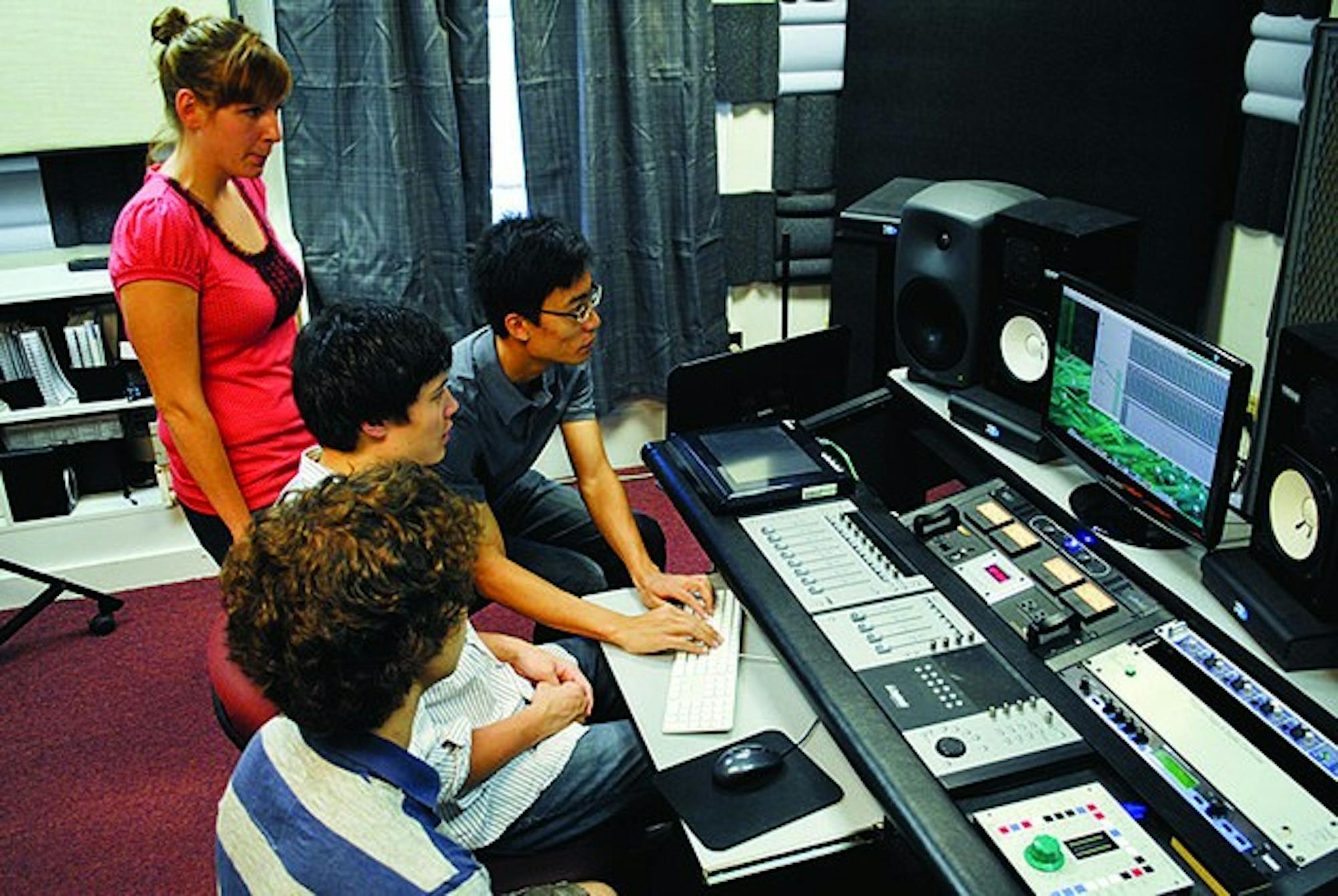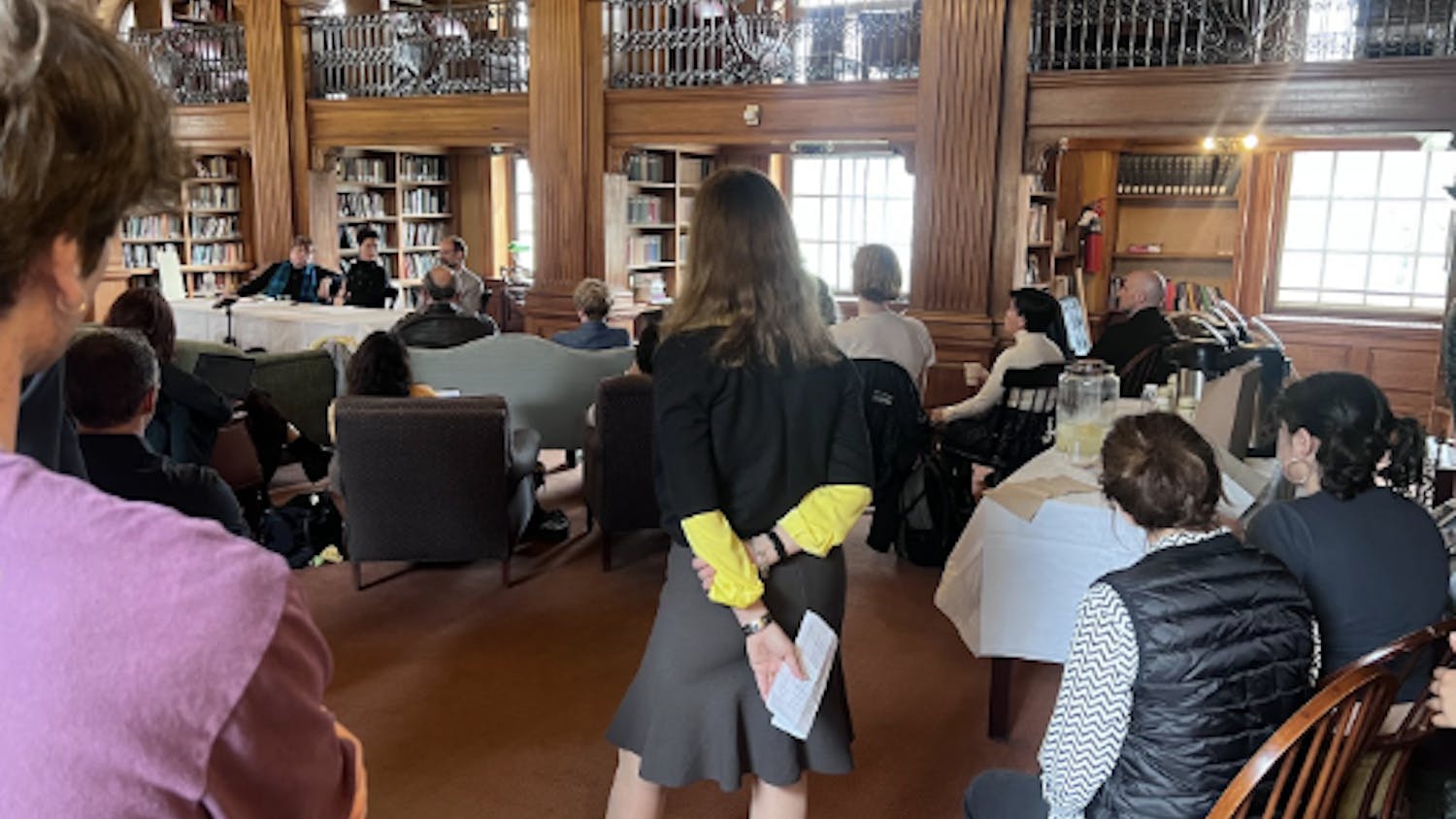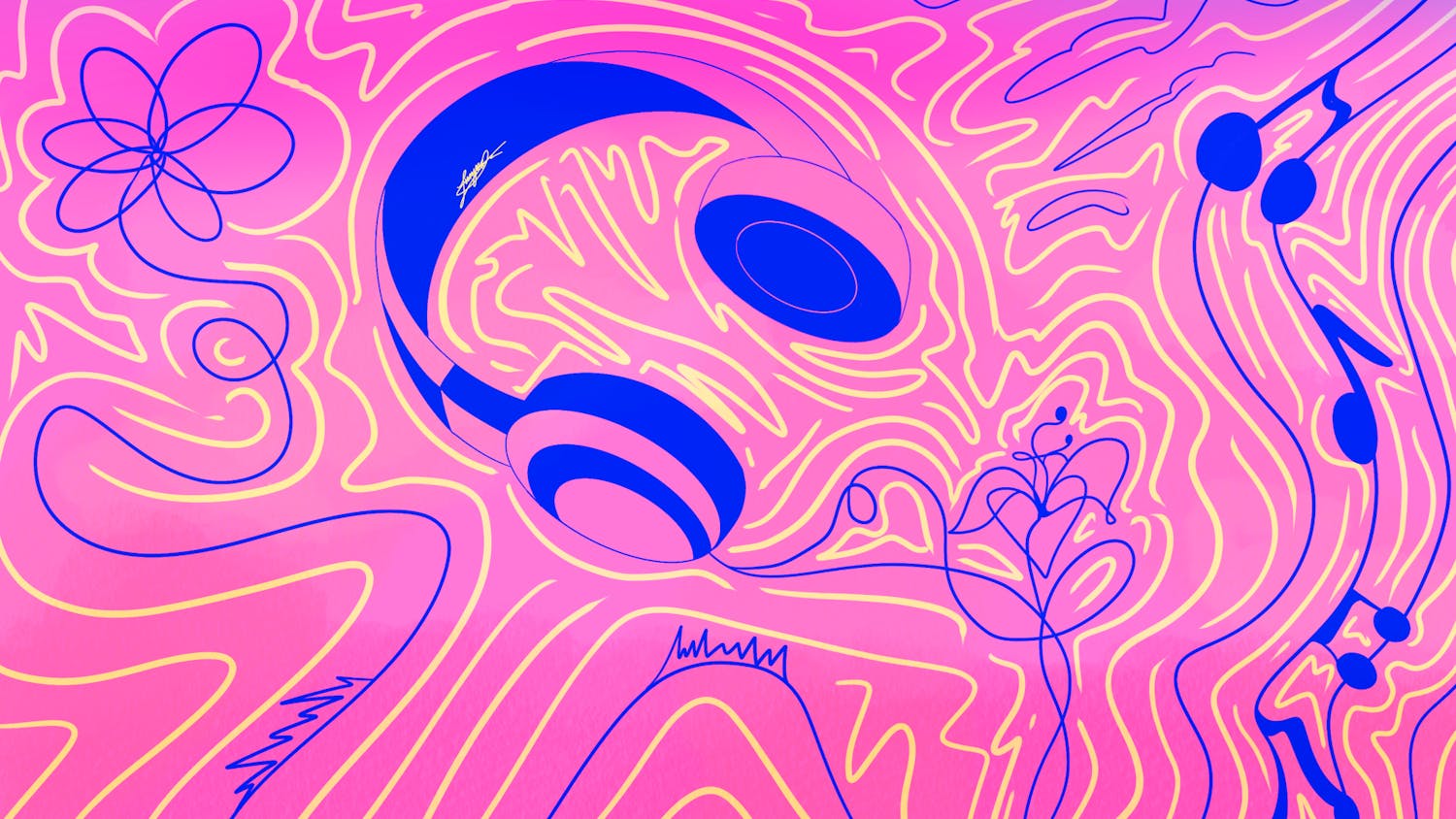The projects, which are the culminating experience of the past term's work, represent many of the new compositional possibilities allowed by advancements in sound technology, according to graduate student David Rector, whose work will be displayed in the exhibit. The exhibits are displayed throughout the gallery, which is in the garage space of the Hopkins Center, inviting viewers to walk around and trigger the various sculptures' motion-sensor sounds.
One piece on display is a plexi-glass sculpture crafted by Alec Carvlin '15, out of which 16 squares have been cut and to which sensors from an XBox Kinekt are connected. The display encourages viewers to touch the cut-outs, triggering different "sound and image projections," he said.
"[The viewers] are essentially building their own sound with elements that are given to them," he said.
In addition to the students' projects, a piece by music professor Spencer Topel, the instructor of "Advanced Sound Design," will also be showcased alongside his students' works. His course is unique in its intent and design, and the exhibit will be thought-provoking, challenging and entertaining, according to Zach Wooster '15, whose work will also be displayed in the exhibit.
"Sound/Unsound" is one of few exhibitions at Dartmouth that offers an opportunity for a multimedia display outside of the more classical music field, according to Wooster. Exhibits at Dartmouth are typically more rigid, but works in "Sound/Unsound" necessitate the audience's interaction with the pieces. Wooster's installation, for instance, is a sculpture made of tree branches that plays music when an individual moves toward and away from its branches using motion sensors that trigger an array of sounds, ranging from the Baker Bell Tower's chimes to the song "Dear Old Dartmouth."
These pieces will be showcased in various stations in the studio, allowing visitors to experiment with and view each different project.
"A lot of stuff we're working on hasn't really been possible until very recently in the musical world," Rector said.
Some of the exhibit pieces utilize pre-recorded sample sounds, while other pieces rely on student-created synthesized music. Synthesizing in particular is more challenging to create, as it requires students to program and compose music from scratch, according to Rector. The process of creating the interactive exhibits was similarly difficult, as it required a knowledge of welding in order to solder the wires together.
The exhibit highlights the interactive nature of all the projects, which rely on participants' movement and create new possibilities for composition by audience participation, according to Carvlin.
Despite the experimental nature of many pieces in the showcase, Carvlin said that some projects will resemble more commercially popular electronic music.
"My compositions still draw upon sounds from dubstep, trance and house music, which are now being used in an interactive sound art format," Carvlin said.
By contrast, Wooster's tree structure incorporates themes relating to the natural world, in particular using sounds related to the College. Wooster said that this showcase offers the unique opportunity to exhibit music that is not associated with the classical or jazz genre.
"Sound/Unsound" will open at 10 a.m. on Nov. 14 in the Hopkins Center and will remain on display until Nov. 17. The digital music showcase will begin at 8 p.m. on Nov. 13 in Collis Common Ground, where participating students will perform live laptop music performances.




